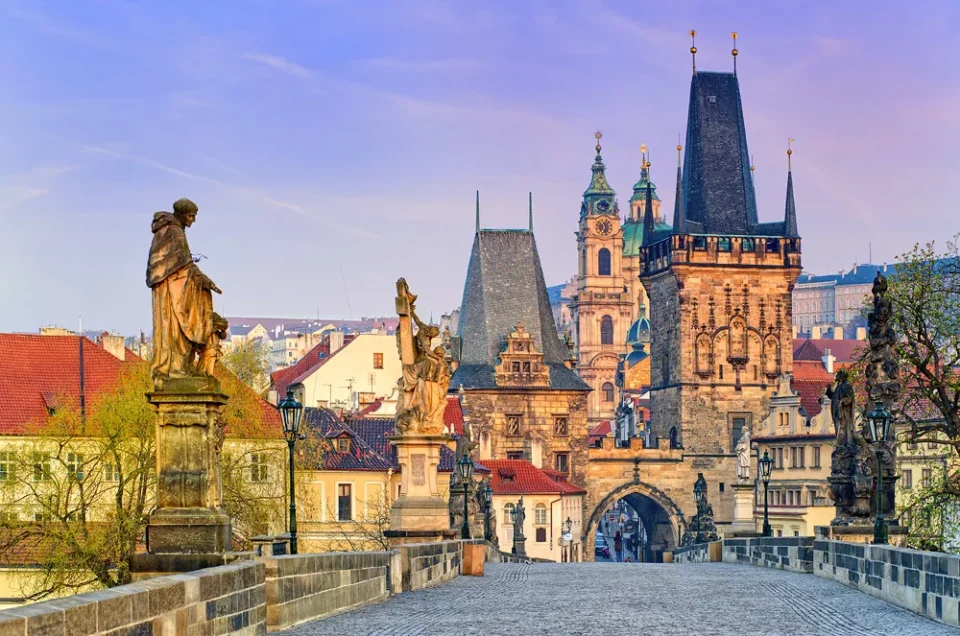The history of beautiful Prague is linked to the Vltava River, bringing life to the people who settled on its banks. “Wild water,” as the river was called in ancient times, held many surprises in its turbulent waters, associated with floods and deluges that destroyed people’s homes. Humanity has always tried to tame its nature by building numerous locks and bridges. One of the rulers of the river’s water element became the Charles Bridge, connecting the two banks. Like a unique necklace, it not only restrains the untamed Vltava but also beautifully adorns it, becoming a landmark of Prague.
History
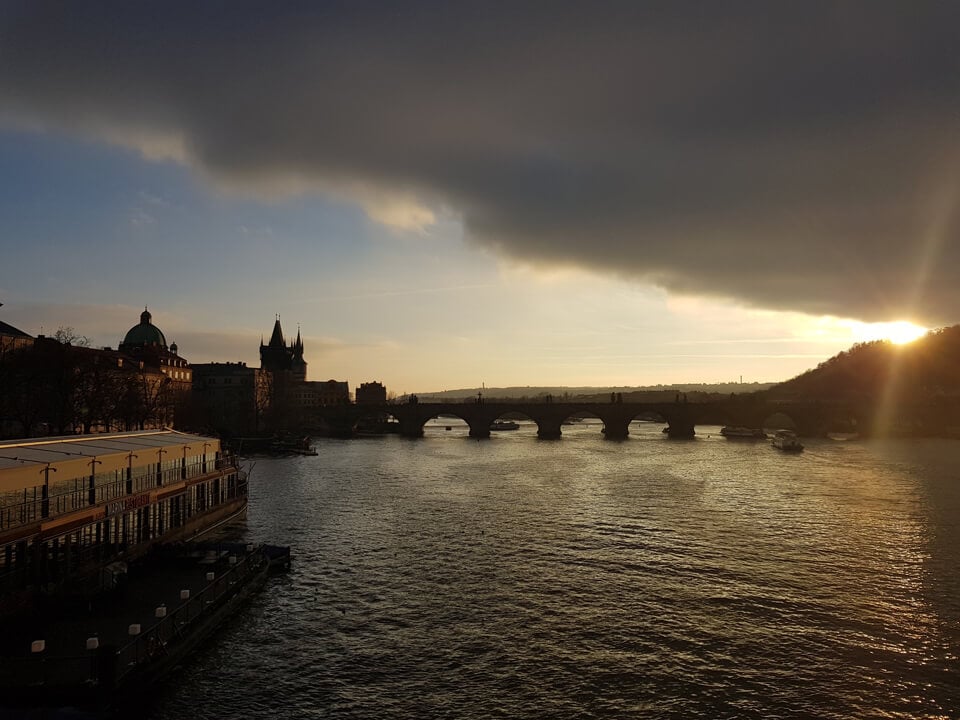
Charles Bridge is considered the oldest architectural structure in the capital, symbolizing the Czech Republic. Among the 18 bridges in the city, it stands out for its beauty and unique atmosphere of antiquity. Performing the functions of transportation, the bridge had strategic importance for all of Europe during the medieval period. The “Royal Way” ran across it, connecting the Old Town with Prague Castle. The bridge has long since become pedestrian-only, but walking on it with bated breath, you can hear the sounds of the king’s chariot rushing to the luxurious Royal Court.
Almost in the place of the stone bridge until the 12th century stood a wooden bridge, destroyed by the river’s malign forces in 1157. The order of Vladislav II to build a new stone bridge was fulfilled by 1172. It was named Judith Bridge after the king’s wife. The structure stood for almost 170 years. Now, the remains of the ancient bridge are interesting artifacts of antiquity, displayed for viewing near the tower and in the basement of a house at 82 Lužická Seminary Street. Its destruction was a national disaster. A special bridge was needed, resistant to floods and other natural disasters.
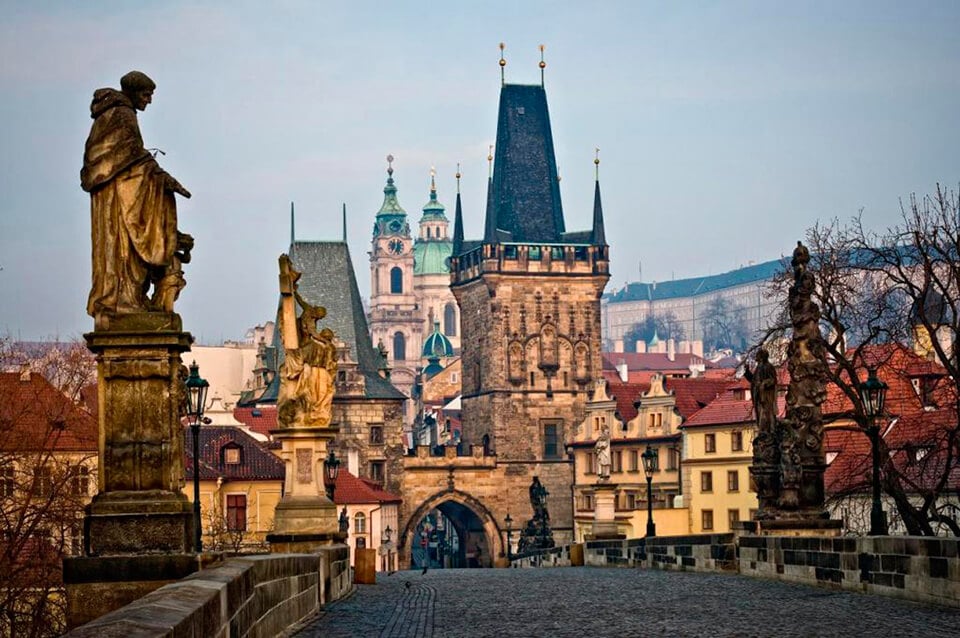
Any forces, even magical ones suggested by astrologers of the time, were called upon for help. Based on their advice, the first stone of the bridge was laid by King Charles IV on July 9, 1357, at 5:31 am. The numbers 1, 3, 5, 7, 9, 7, 5, 3, 1, forming a pyramid adorned with the number 9, were considered favorable for starting a project meant to last for centuries. The construction was completed in 1402. The main construction material chosen was monolithic sandstone. Both sides are securely fortified with powerful towers, designed along with the bridge by the 22-year-old architect Peter Parler, whose talent had already manifested in the construction of St. Vitus Cathedral.
The total length of the structure is about 520 meters, with a width of almost 10 meters. The construction is supported by 16 arches, lined with processed monolithic slabs. It is said that the turbulent Vltava waters were held back with the help of the devil. The architect, who made a cunning deal with the devil to transfer the soul of the first pedestrian on the bridge, substituted a black rooster instead of his son, thus outsmarting the devil. Now, the devil reminds of himself in the form of a ghost on a gloomy day, handing out his portrait to passersby. But this is just an interesting legend among numerous stories about Prague’s landmark. The bridge was originally called the Stone Bridge, then the Prague Bridge.
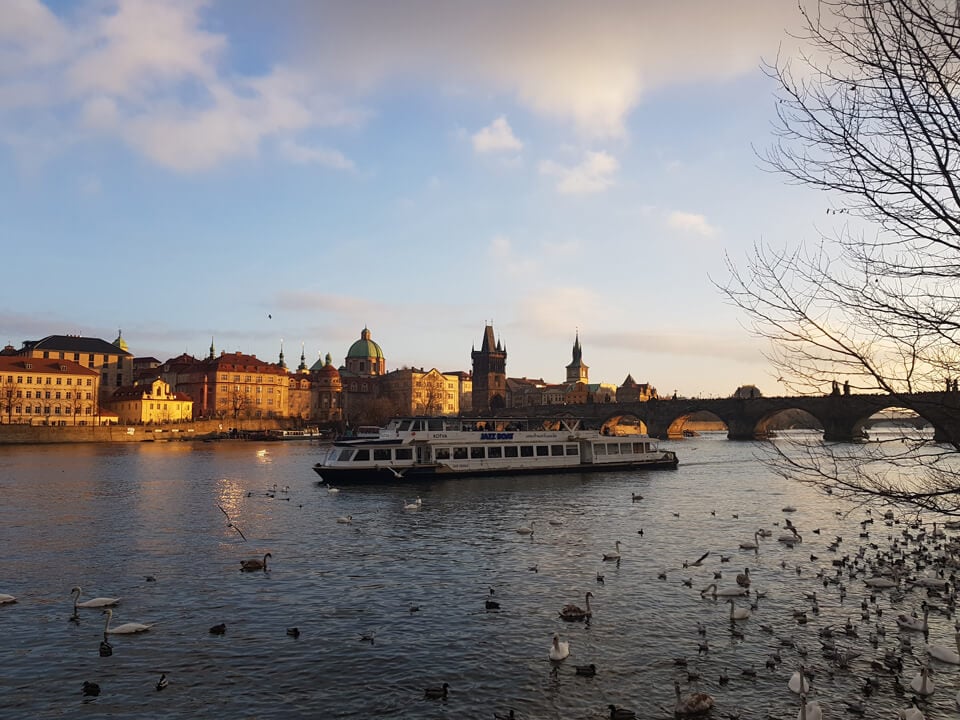
Since 1870, it has been called Charles Bridge. All major historical events in Prague are connected to this bridge. For example, the passage of the Hussites to Prague Castle in 1420, the thwarted attack of the Swedes in 1648, the famous barricades located in the bridge tower during the European revolution of 1848. Even the consequences of the catastrophic flood in 1890, which damaged the bridge, were completely eliminated by restoration works lasting two years. Major repairs of the bridge were conducted in 1975.
The bridge once had a tramway route, illuminated by kerosene lamps, which were replaced by gas lighting in 1866. Electricity enabled the creation of a tram connection between the riverbanks in 1908. The melodious ringing of the tram, with its original lower part current collectors, replaced the clatter of hooves from the old tramway, lasting until 1974, when the bridge became pedestrian-only.
The permanent inhabitants of the bridge became street artists, vendors of folk crafts, and musicians. Famous sculptures that have adorned it for six centuries, ancient towers, the natural strength of the stones hanging over the water fill the bridge’s atmosphere with a positive aura. It consists of the energy of myths and legends, attracting millions of tourists to the bridge regardless of the time of year.
The extraordinary strength of the stone giant is linked to the legend of a special mortar made from eggs, milk, and wine that binds the monolithic sandstone. It is believed that this is the only bridge structure in the world reinforced with such products. Not all the secrets of the ancient bridge have been revealed to this day. For example, information from divers examining one of the bridge’s foundations about the discovery of an unexplained layer of compacted moss, which does not develop underwater in natural conditions.
Typically, residents of the 14th century collected it in the forest from fir trees, laying it among gravel and between stones to create optimal conditions for the bridge’s weight distribution. Or maybe it is determined by magical forces guarding one of the most beautiful ancient structures in Prague.
Bridge Towers
The functions of the ancient structure’s shore fortifications were performed by towers standing on both sides of the river. For a long time, they simultaneously served as ceremonial decorations of the structure. These are architectural masterpieces that are still functioning today.
Old Town Bridge Tower

Approaching the bridge from the east, one cannot help but be amazed by the beautiful medieval European structure called the Old Town Tower. The eternal stone bridge looks even more majestic from the height of the Gothic tower, built on the intermediate support of the bridge in 1390. It hangs directly over the turbulent Vltava waters. The tower’s height is almost 50 meters above the bridge’s surface. A staircase leads to its internal premises. The top is adorned with valuable figurative plastic. Above the tower’s gates are the coats of arms of various lands of the Roman Empire.
The figure of the famous kingfisher is forever frozen in the pointed arch of the tower. The building houses sculptures of the Czech saints Vitus, Adalbert, and Sigismund, as well as kings Charles IV and Wenceslas IV, who have gone down in the country’s history. This confirms the tower’s role as a triumphal arch. Two types of prisons were located in the tower. The basement housed a prison for common criminals.
One floor above was the prison for convicted wealthy representatives of the famous estates. During excursions, visitors are invited to inspect the conditions of the prisoners. The saddle-shaped roof, bay windows, and sharp corner spires complete the tower.
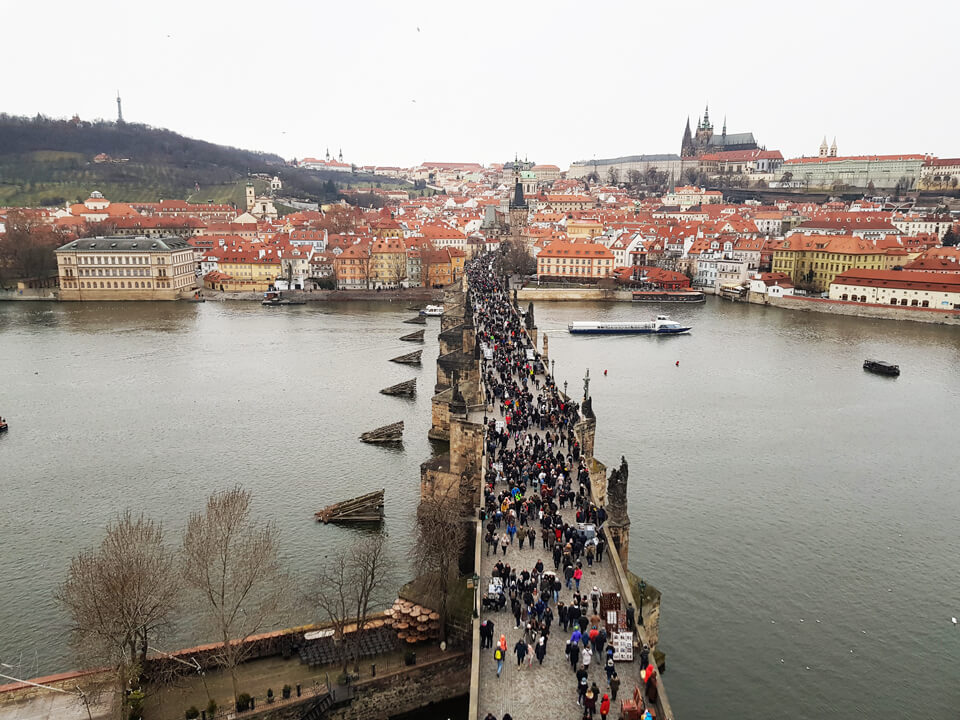
At the top, there is a convenient observation deck that welcomes visitors according to the following schedule: June-September from 10 am to 10 pm, March-May, October from 10 am to 7 pm, November-February from 10 am to 5 pm. During the walk, it is helpful to recall the legend that you should not hear the screech of an owl flying over the tower to prevent a fire in the house. Or notice the mysterious water spirit living under one of the arches.
Lesser Town Towers
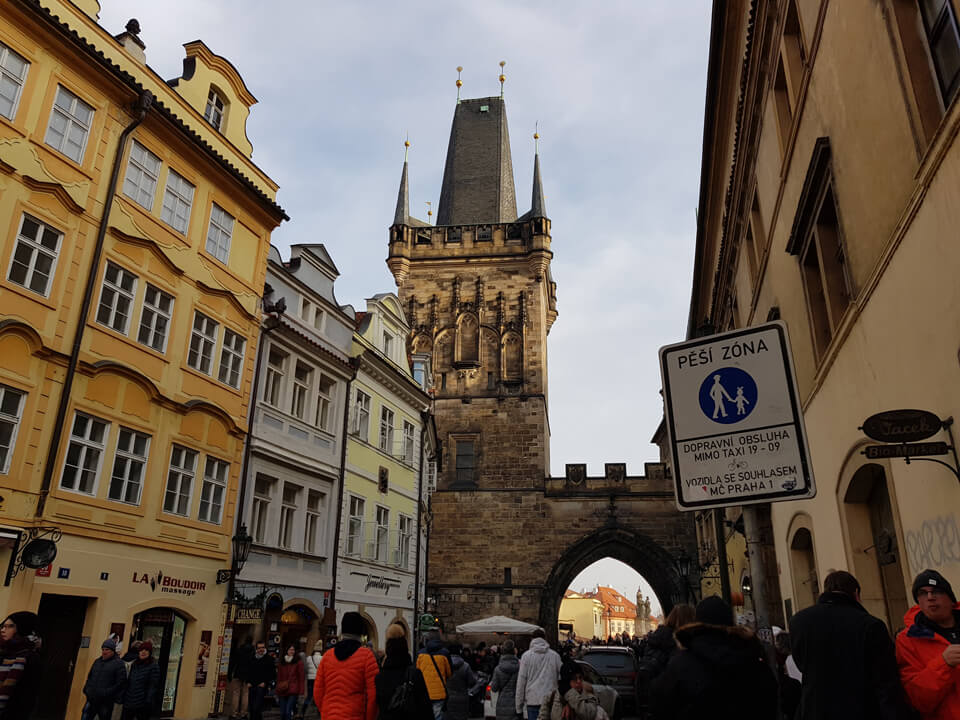
Approaching the bridge from the west, one must stop at the tower walls built in different periods. They differ in individual design styles. The low Romanesque building has existed since the 12th century. It was rebuilt and supplemented with elements of different styles. For example, around 1590, it acquired Renaissance features. The tower was part of a Romanesque fortress, serving to protect the bridge. For some time, the tower was used as a prison for dangerous criminals.
The construction of the second tower is associated with the reign of George of Poděbrady in 1464. The building resembles the Old Town Tower. Strong gates between the towers were made during the reign of Wenceslas IV. These were two walls connected by arched spans. Between them stood a massive oak door with iron bars.
The role of the tower’s decoration was played by crests on the edges and hanging coats of arms. At the top of the tower, there is an observation deck offering a view of Prague Castle, cathedrals, and the modern television tower of the city. Visitors reach it after climbing 146 steps of a special staircase. Behind the towers are numerous cafes and restaurants where you can have a delicious lunch.
Sculptures
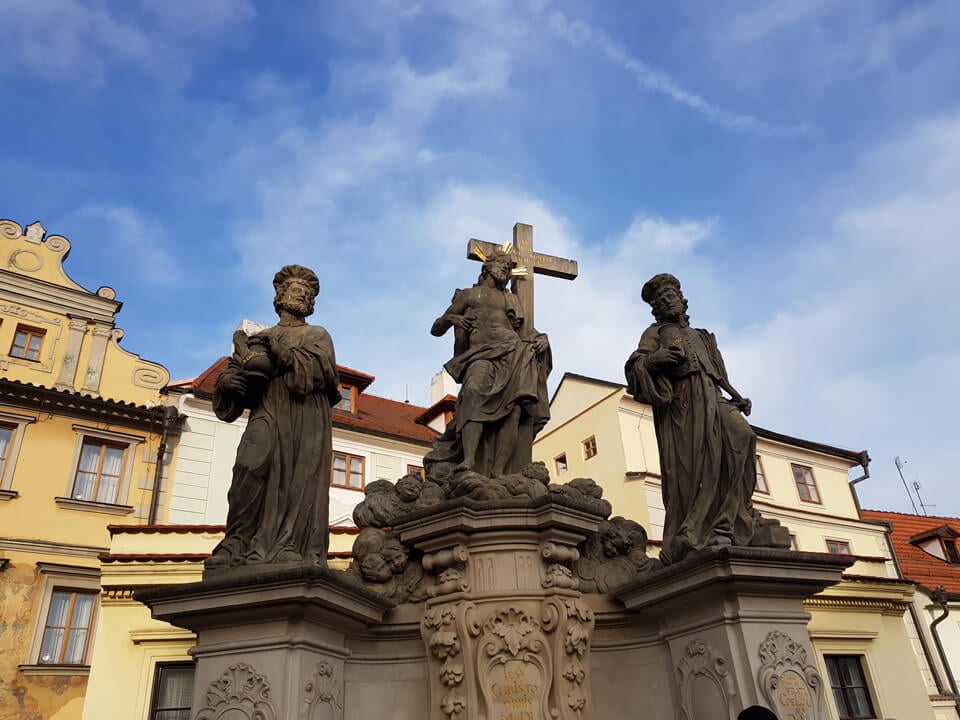
An extraordinary gallery consisting of 30 thematic sculptural groups adorns the bridge along its entire length. The best masters of those times created it from 1683 to 1714. Now, copies of the sculptures stand here, with the originals being kept since the 20th century among the exhibits of the National Museum of the Czech Republic. The right side of the bridge is adorned with the following sculptures of saints:
- Bernard of Clairvaux and Madonna (1709)
- Dominic and Thomas Aquinas at the feet of Madonna (1708)
- Crucifixion. The statue is placed in the spot of the former cross, considered the only decoration in ancient times (1629). A plaque with an inscription in Hebrew praising Christ is attached to the bronze sculpture. This sculptural group is considered the oldest in the gallery.
- Anna with her daughter (future Virgin Mary) in her arms (1707)
- Cyril and Methodius. They are preaching to the pagans (1928). The statue was installed at the expense of the Ministry of Education of the Czech Republic.
- John the Baptist (1857). The sculpture is placed in the spot where John of Nepomuk was thrown into the river. In 1911, Jaroslav Hašek attempted to jump into the river waves here but was saved by a passerby who managed to grab him by the leg.
- Norbert, Wenceslas, Sigismund (1853)
- John of Nepomuk (1683). As the queen’s confessor, he was punished for not revealing the queen’s confession secret to her husband.
- Anthony of Padua with the child Jesus (1707)
- Apostle Jude Thaddeus (1708)
- Blessed Augustine (1708)
- Cajetan (1709)
- Philip Benizi (1714)
- Vitus with tame lions (1714). According to legend, when pagans threw Saint Vitus to be torn apart by lions, they licked his feet without causing harm.
- Healers Cosmas and Damian (1709). The creation of the sculpture was initiated by the administration of the medical faculty of Charles University.
On the opposite side stand the following sculptures of saints:
- Wenceslas (1858)
- A sculptural ensemble includes figures of John of Matha, Felix of Valois (1714). Inside the sculpture is a prison. Guarded by a Turk, it symbolizes a cave with Christians. Historically, this is linked to the founders of the order, Felix and John, who ransomed Christians from Turkish captivity. During the war, the statue served as a sign of hope for the residents of Prague. They brought flowers to it. This is the most popular sculpture.
- Adalbert (1709)
- Lutgardis conversing with Christ (1710). The sculpture is considered a valuable element of the gallery, made in the Baroque style. It is the most beautiful sculpture in the gallery.
- Nicholas of Tolentino
- Procopius of Sázava with angels and Saint Vincent
- Francis of Assisi
- Saint Ludmila, teaching her grandson to read. Later, he becomes Saint Wenceslas (1720). Ludmila is considered the first martyr of the Czech Republic, baptized by Methodius. Along with Wenceslas, they are the most revered saints in the country.
- Francis Borgia
- Christopher carrying the child Jesus across the Vltava
- Knight Brunsvik with a tame lion. The sculpture is attached to the support placed outside the bridge’s railings.
- Joseph with the child Jesus
- Lamentation of Christ by John the Evangelist and Mary Magdalene
- Saints Barbara, Elizabeth, Margaret with a dragon’s head at their feet
- Themis and Ewa resolving disputes between son and mother. The sculpture was installed at the initiative of the law faculty.
Making a Wish
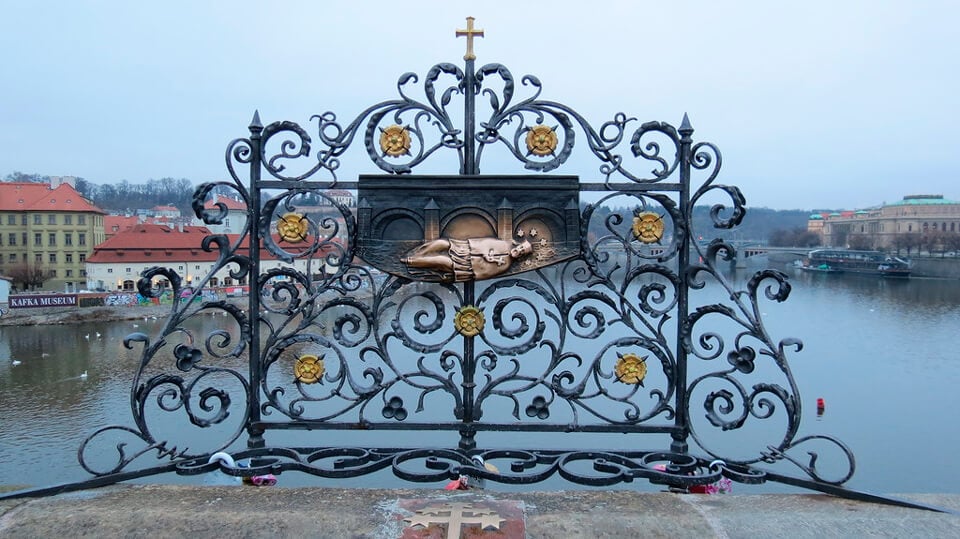
The bridge’s magic has given rise to unusual customs that have become traditions for pedestrians. A cherished dream will come true if you think about it in specific places on the bridge:
Next to the statue of John of Nepomuk, numbered 8. While making a wish, you need to place your hand on the right side of the statue. Then touch the left side to the image of a dog.
On the grate next to the figure of John. It indicates the place from where the saint was thrown into the river. Fingers are placed on five small stars. According to legend, they appeared above the water, showing people where the saint’s body was located.
It is said that a wish will come true if you touch any sculpture on the bridge. And lovers must kiss on it. Complementing the extraordinary architectural complex of the bridge is a neo-Gothic staircase leading to the island of Kampa. It has always been there. Initially wooden, since 1844 it became grand and made of stone.
Location and How to Get There
You can access Charles Bridge through any of the towers. To the Lesser Town Towers located to the west, you can reach by bus or tram. The stop is called Malostranské náměstí. When traveling by metro, you need to exit at Malostranská station on the green line. To the Old Town Tower, you can easily arrive by tram or metro. The tram line stops are called Karlovy lázně, Národní divadlo, and Staroměstská.
Ancient bridges of the planet evoke inexplicable feelings of touching the life of past civilizations and centuries. Perhaps standing on the remarkable Charles Bridge and looking at the mysterious waters of the Vltava River, you will be lucky enough to see the magical Czech stone called moldavite. And it is its magical power, born during the catastrophic formation of the earth, that manifests on the bridge.
Klementinum in Prague: The Most Beautiful Library in the World

